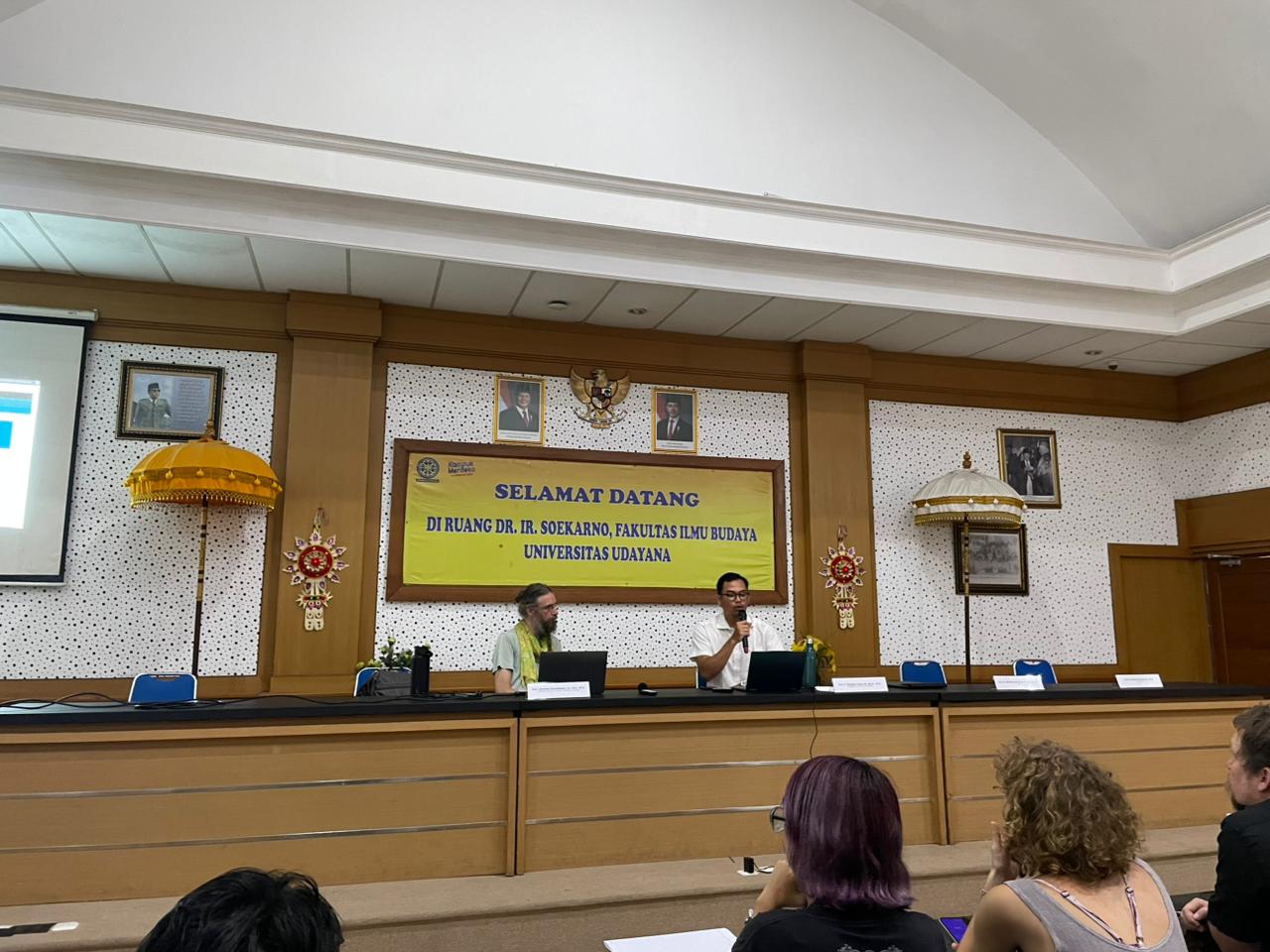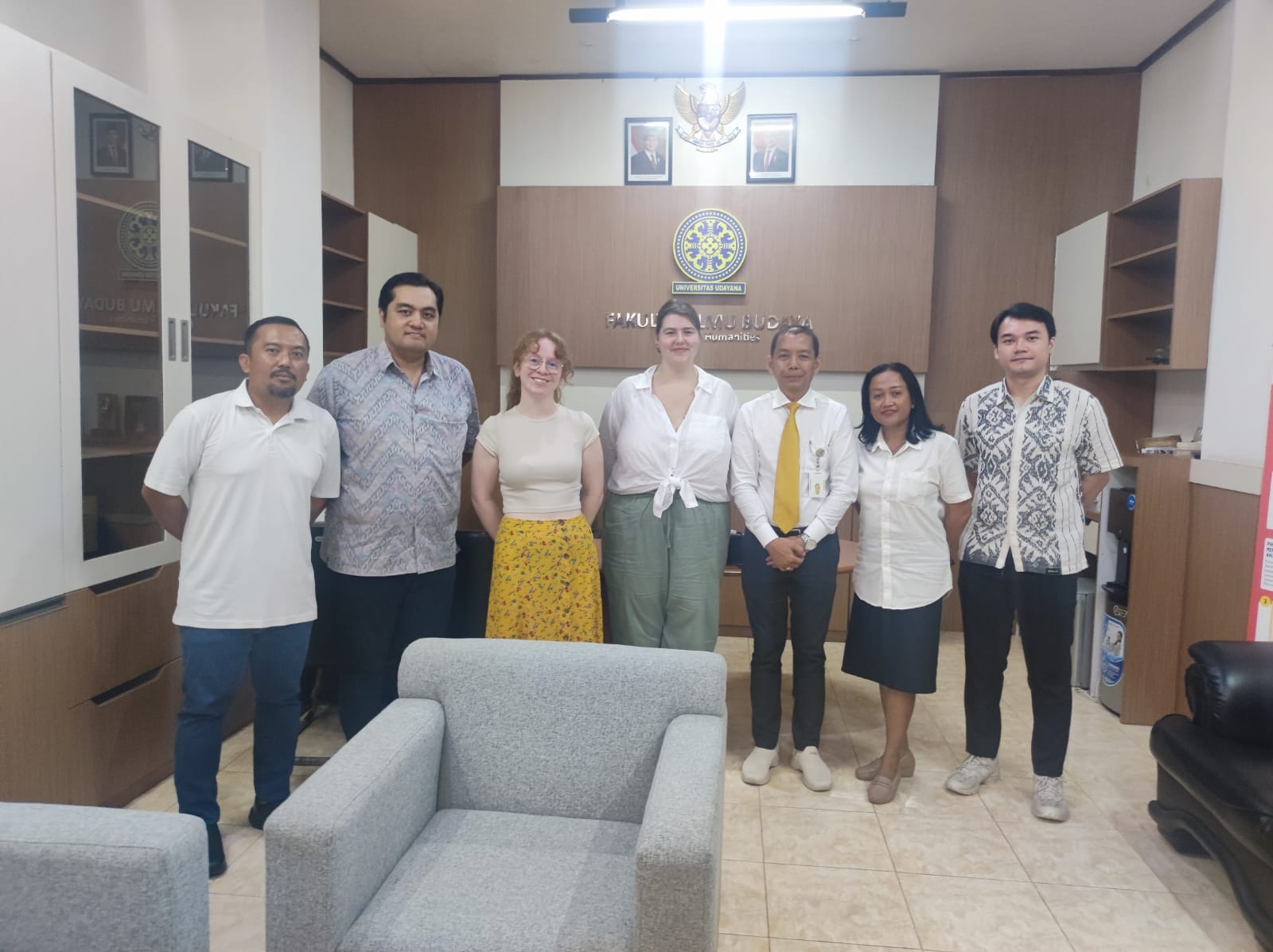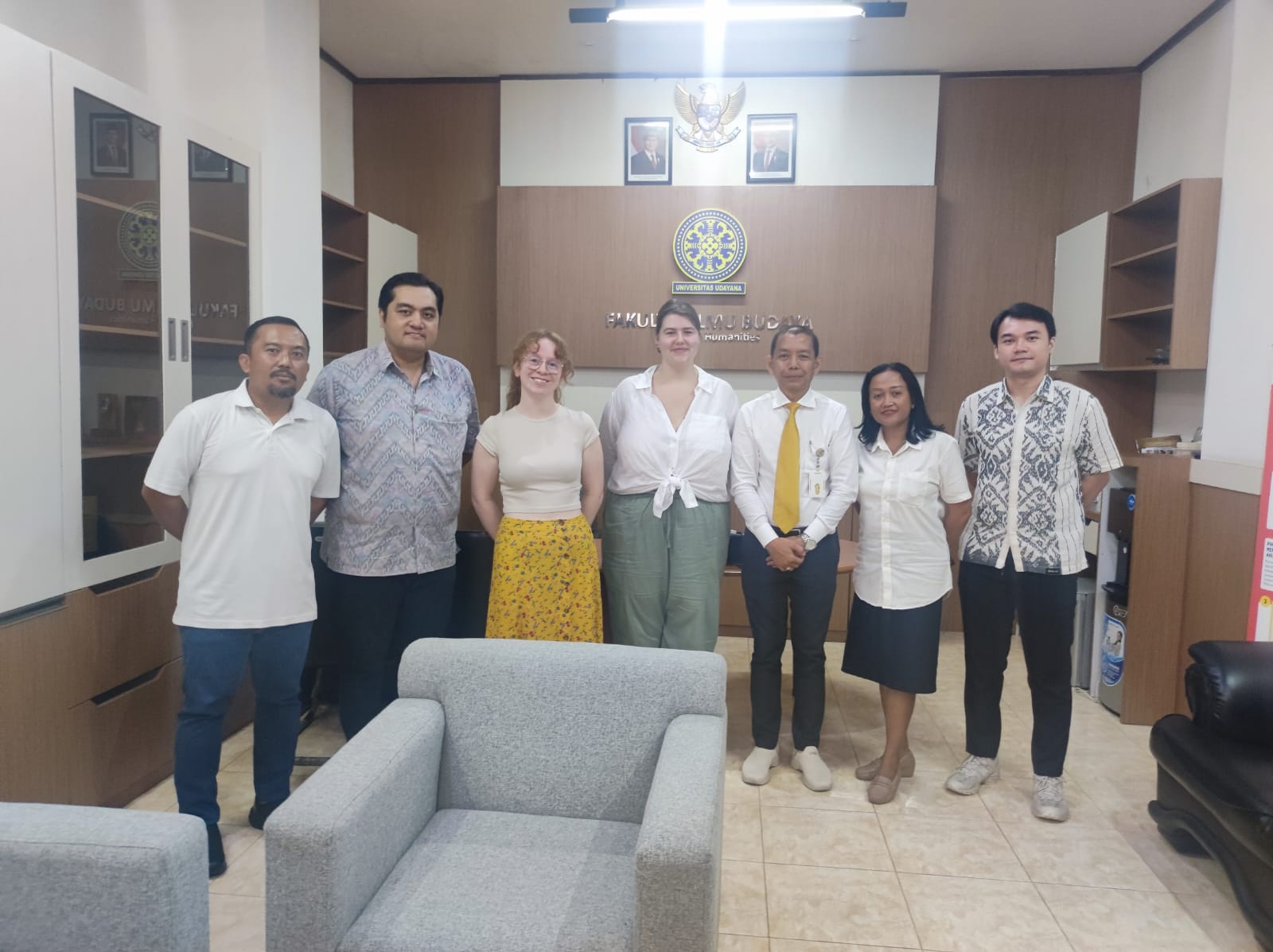The Guest Lecture “Open-Source and Free Software Tools for Archaeology: a State of the Art and a Focus on the archaeoViz System”
Denpasar, November 10, 2025 — The Bachelor of Archaeology at Udayana University held a public lecture on “Open-Source and Free Software Tools for Archaeology: a State of the Art and a Focus on the archaeoViz System.” This public lecture featured Sébastien Plutniak, Ph.D. from University of Toulouse as the speaker and was moderated by I Made Agus Julianto, S.S., M.Sc. The event took place in the Soekarno Room, Faculty of Humanities at Denpasar attended by students and academic staff of the Bachelor of Archaeology. This activity is part of Udayana University's efforts to strengthen digital literacy in the field of archaeology and support the use of open technology in scientific research. Through this lecture, students are introduced to the use of open-source software as an efficient and innovative solution in archaeological data management.
This lecture provided an opportunity for students to understand the concept of open science, a global movement that promotes openness in the entire research process, from data collection and analysis to publication. The speaker explained that in the context of archaeology, open science is not only about sharing research results, but also about creating a collaborative ecosystem where data, maps, and even 3D models of archaeological sites can be accessed and developed jointly by researchers from various countries. The application of open science in archaeology is considered capable of accelerating innovation and expanding international research networks. With the support of open-source platforms, young researchers are expected to contribute more actively to build an inclusive and sustainable archaeological database.
The keynote speaker explained that the development of open science has now opened a new chapter for the academic world, including the field of archaeology. Through this approach, research is no longer conducted in a closed manner, but emphasizes collaboration and openness in managing and sharing data. Sébastien said that with concepts such as the semantic web and the use of R-based platforms, researchers can now connect with each other and utilize various collective data to enrich their analysis and findings.
One of the interesting parts of this lecture is the introduction to ArcheoViz, a platform designed to explore and analyze archaeological spatial data visually and statistically. This platform helps researchers understand the distribution patterns of artifacts or site structures through interactive displays, making previously complex data easier to interpret. Furthermore, ArcheoViz was later developed into the ArcheoViz Portal, a platform that integrates various data sources and supports cross-research collaboration. Not only did the speaker discuss technology, but they also highlighted the importance of applying the principle of data openness in the ArcheoViz ecosystem. According to them, openness is not merely about sharing data, but rather an effort to build research practices that are transparent, sustainable, and accessible to all parties.
In this lecture, students were invited to see that archaeology in the digital age requires new skills. It is not only about excavating artifacts, but also about managing information carefully and openly. This activity provides a space for reflection for the academic community to understand the challenges and opportunities in the development of open-source archaeology. In this way, future archaeological research is expected to be able to adapt rapid technological development and remain relevant in an increasingly connected scientific world.



UDAYANA UNIVERSITY